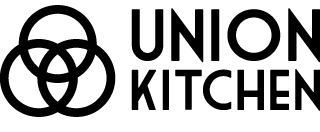Investment Structures for Food Businesses
All businesses hit a point where they require some degree of outside financing, whether it’s meeting a large purchase order or getting a new product off the ground.
This process can seem confusing and intimidating between the different terminology, understanding what and how to ask for financing, and what that means for you and your company long term.
With this in mind, we’ve created this guide to walk you through the basics of what equity is, where to look for your first investments in your business, and how to make sure you’re making deals that are in the best interest of you and your potential investors.
Let’s dive in!
EQUITY:
You’ve likely heard the term equity thrown around. Simply put, equity is the ownership in an asset. In this case, the asset is your business.
Let’s explore this more closely:
Every business is made up of a certain number of shares. Shares are divided out between owners. These shares are what make up equity, or your ownership in an asset. As you take on new investment, your business will issue new shares.
Holding equity in a company is an expressed belief in its potential success. This, in turn, creates mutually aligned interest in wanting to see the brand succeed.
Adioma provides a great summary on how startup funding works, “The basic idea behind equity is the splitting of a pie. When you start something, your pie is really small. You have a 100% of a really small, bite-size pie. When you take outside investment and your company grows, your pie becomes bigger. Your slice of the bigger pie will be bigger than your initial bite-size pie. When Google went public, Larry and Sergey had about 15% of the pie, each. But that 15% was a small slice of a really big pie.”
WHERE TO START GATHERING INVESTMENT:
We like to say that the decision to invest is based on two things: good feelings and hard numbers. It ultimately takes a good amount of both for an investor to buy in, and the further out from your immediate network you go to ask for investment, the more the hard numbers come into play.
There are different names for different rounds of investment. The earliest, after crowdfunding and other non-equity exchanging options, is Family & Friends. This also happens to be the most common. It’s when you raise money from your own personal network. Decisions are based more around good feelings and less of the hard numbers since you are still very early with limited traction outside of the local market.
There are a number of different structures for raising a Family & Friend round including SAFE agreements, Convertible Notes, Convertible Debt, or direct equity exchange. We will dive into the details on structure a little bit later.
SELECTING YOUR DEAL STRUCTURE:
Deciding on the right deal structure is similar to finding the right loan. It needs to make sense financially both in the short and long term. The structure of the deal can be particularly challenging for early stage companies since, as discussed above, their are limited sets of sales data and metrics. That means it is difficult to know how much money with worth what percentage of your company, or, in other words, how big is the pie. Think about it. You see so much potential in your company. You’ve had good local sales. You think your company is worth at least $1,000,000. It feels personal. An investor comes in and says it’s worth $250,000. There’s just not enough sales volume or historical data to support a $1,000,000. How do you come to an agreement?
Instead of worrying about valuing the company in a traditional deal structure, we recommend two types of deals for early-stage businesses: convertible notes and SAFE Agreements.
A convertible note is all based on debt, meaning the investment will earn interest over time. These are the most common structures for deals made with early stage startups. The deal establishes when and how much of the investor’s investment will convert into equity. For example, if $50,000 is invested, the deal might say that 50% (or $25,000) of that investment will turn into equity in 1 year. At the 1 year mark, the investor would then own $25,000 worth of equity in the company, based on the company’s valuation at that time. The other aspect of the deal, as mentioned above, is that you will ultimately pay the investor interest on their investment at the end of the agreed time. This is because you are accepting their investment as a debt payment for your business.
The SAFE Agreement was originally developed by Y Combinator to invest in their accelerator businesses and provide a more supportive investment structure to entrepreneurs. SAFE Agreements are largely identical to convertible notes, with two exceptions: there is no debt involved in the agreement, and thus no interest to pay on the investment.

Comments